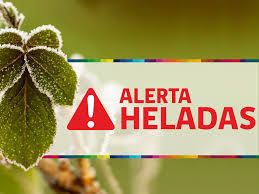Introduction
When cold weather begins to roll in, especially during the early morning hours, one term starts showing up across weather reports, mobile apps, and radio stations—“alerta de heladas.” While it may sound simple, this weather warning holds great importance for communities, farmers, businesses, and anyone vulnerable to sudden temperature drops.
But what exactly does alerta de heladas mean? Why is it becoming more relevant with each passing year? And most importantly, how can you respond to it effectively?
In this detailed article, you’ll discover everything you need to know about the alerta de heladas—from its definition and significance to why it’s trending globally, how it can benefit communities, and smart tips to stay safe and prepared.
What is alerta de heladas?
“Alerta de heladas” is Spanish for “frost warning” or “frost alert.” It is a meteorological alert issued when temperatures are expected to drop near or below the freezing point (0°C or 32°F). This drop can cause frost formation, impacting agricultural fields, road conditions, power lines, and human or animal health.
Frost occurs when surfaces cool below the dew point, and water vapor freezes into ice crystals—typically at night or early morning when skies are clear and winds are calm.
There are different levels of alerts:
-
Watch: Conditions are favorable for frost but not certain.
-
Warning: Frost is likely, and preparations should be made.
-
Advisory: Moderate frost is expected and may cause minor disruptions.
Why is alerta de heladas important?
The significance of a frost alert lies in its preventative power. It helps individuals and organizations act before damage occurs. The consequences of ignoring such alerts can be economically devastating or physically dangerous.
Here’s why it matters:
-
Protects agriculture
A single night of frost can wipe out entire harvests—especially for sensitive crops like strawberries, grapes, or citrus fruits. -
Improves road safety
Frost forms black ice on roads, leading to slippery conditions and increased accident risks. -
Prevents property damage
Frozen water in pipes can burst plumbing systems, causing expensive repairs. -
Supports animal and human safety
Domestic animals, pets, and even people can suffer from hypothermia or frostbite if exposed without protection. -
Allows time for preparation
An early alert ensures that communities have enough time to implement frost mitigation strategies.
Why is alerta de heladas trending?
You might have noticed that alerts for frost and extreme cold are showing up more frequently. This isn’t a coincidence—it’s a global trend driven by climate instability and technological advancements in weather tracking.
Reasons behind the trend:
-
Climate change effects
With more unpredictable weather patterns, frost is now appearing in regions previously considered safe from freezing temperatures. -
Expanded agricultural coverage
As farming spreads into marginal climates, the need for alerts in these zones has grown. -
Rise in automated weather notifications
Smartphones, smartwatches, and weather apps now automatically notify users of incoming frost conditions. -
Media coverage of agricultural losses
Viral videos and news reports showing massive crop destruction after unexpected frost have sparked public interest. -
Interest in home gardening
More people are planting home gardens and are eager to protect their plants from unexpected frost damage.
Benefits of an alerta de heladas
The benefits of this alert system are wide-reaching, impacting not only farmers but urban dwellers, business owners, and public agencies alike.
Top advantages include:
-
Early preparation for agriculture to reduce losses
-
Improved road safety with salt spreading or road closures
-
Reduced infrastructure damage from frozen pipes or systems
-
Lowered risk of illness by encouraging people to dress appropriately
-
Community coordination for shelters and emergency services
-
Savings on insurance claims and emergency costs
-
Public awareness and education about cold weather risks
-
Efficient energy planning for heating systems or greenhouses
Common impacts of ignoring alerta de heladas
When frost warnings are ignored, the consequences can be serious and often irreversible.
Negative outcomes include:
-
Crop failure and food shortages
Frost can destroy tender plants overnight, leading to economic losses for farmers and supply chain disruption. -
Increased traffic accidents
Without salting or awareness, icy roads can cause multi-vehicle collisions. -
Power outages
Frost can damage power lines or transformers, leaving homes without electricity in freezing temperatures. -
Injury or illness
Cold-related health emergencies such as hypothermia or slips and falls become more common. -
Insurance spikes
Damage from preventable frost events leads to higher premiums or denied claims.
Useful hints when receiving an alerta de heladas
Knowing how to act on a frost warning can make a huge difference. Preparation and timely action are key.
Follow these practical tips:
-
Farmers and gardeners:
-
Cover crops with frost cloths, blankets, or plastic sheeting
-
Water soil in the afternoon to retain ground heat overnight
-
Use fans or heaters in greenhouses
-
Harvest ripe crops before the frost hits
-
-
Drivers and commuters:
-
Avoid travel during early morning if possible
-
Scrape windshields and allow time for defrosting
-
Drive slowly, especially over bridges and shaded areas
-
Keep an emergency kit in the car with blankets and food
-
-
Homeowners:
-
Let faucets drip slightly to prevent pipe bursts
-
Cover exposed pipes and insulate outdoor faucets
-
Seal gaps in windows and doors
-
Ensure your heating system works properly
-
-
Pet and animal owners:
-
Bring pets indoors or provide heated shelters
-
Use straw bedding for outdoor animals
-
Ensure access to non-frozen water sources
-
Increase calorie intake for livestock if necessary
-
Why use alerta de heladas rather than waiting for the cold?
Prevention is always better than reaction. Frost may seem harmless, but its impact is often underestimated.
Reasons to act on the alert:
-
Forecasts are based on reliable meteorological data
-
Reactions after frost are often too late to save crops or systems
-
Warnings provide time for strategic decisions—like delaying shipments or rescheduling work
-
Alerts are customized for specific regions and elevations
-
Community safety improves when citizens take alerts seriously
-
Frost conditions are often more severe than expected, especially in rural or elevated areas
Where to check an alerta de heladas
Staying informed is easier than ever. You can find frost alerts via:
-
National Weather Services (e.g., NOAA, AEMET, SMN)
-
Weather apps like AccuWeather, Windy, Weather Underground
-
Local news and radio stations
-
Agricultural extension agencies
-
Government emergency alert systems (SMS, email)
-
Community boards or social media alerts
Always rely on official sources for accurate and timely information.
Conclusion
An alerta de heladas is far more than a cold-weather warning—it’s a vital notification system that helps communities, farmers, and families prepare, respond, and recover from extreme cold events.
With climate shifts and weather unpredictability on the rise, the need to understand and respond to frost alerts has never been more urgent. Whether you live in the city, manage farmland, or just want to protect your plants and pipes, using and responding to these alerts can save time, money, and even lives.
Stay informed. Take action. Respect the forecast—and turn alerts into advantage.
Also Read: Blog del Narco: Understanding Its Popularity and Impact
Frequently Asked Questions
How accurate are frost alerts?
While no forecast is perfect, alerts are usually 80–90% accurate, especially within 24 hours of the event.
Do frost alerts apply to cities?
Yes. Urban areas can experience frost in parks, gardens, or rooftops—especially in valleys or low-lying zones.
Can a frost occur even without visible ice?
Absolutely. Radiation frost can damage crops even if no visible frost forms.
What crops are most sensitive to frost?
Tomatoes, peppers, bananas, strawberries, and citrus fruits are particularly vulnerable.
Can I receive frost alerts on my phone?
Yes. Most weather apps and government alert systems offer custom alerts based on your location.
How can I know if frost will happen at my house?
Microclimates vary. Use a digital thermometer, or check frost maps specific to your area and elevation.



